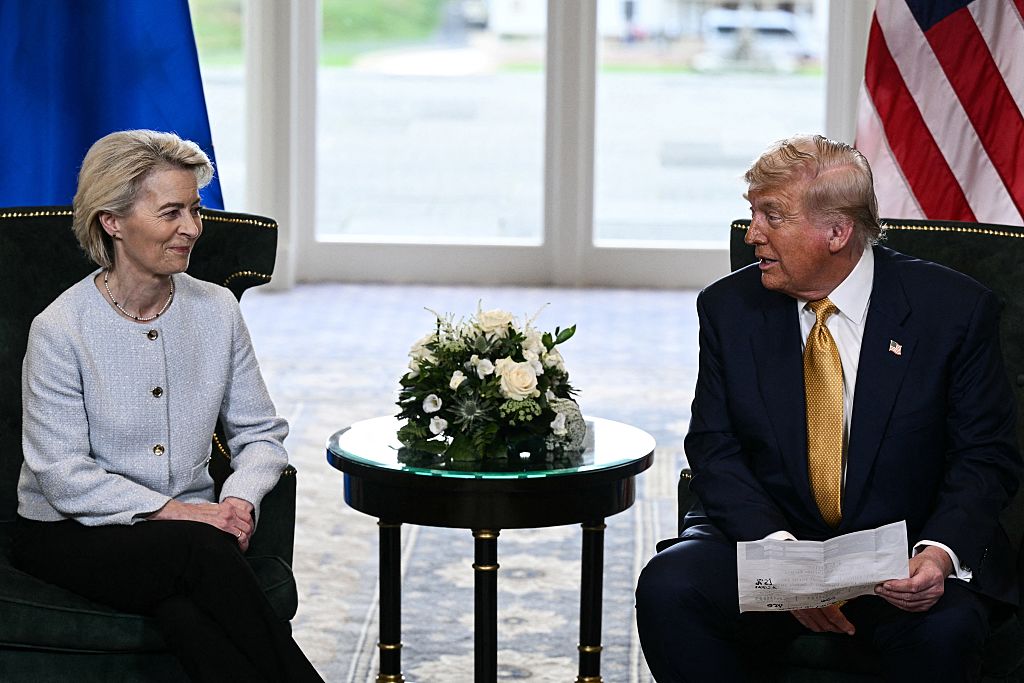
But the outcomes for U.S. trading partners are not all the same. We take a look at a few of them.
It’s August 1 – the deadline the Trump administration set to reach deals with other countries before it hiked tariff rates.
As we’ve noted in trade updates past, expecting dozens of these deals to be completed by then was unrealistic. Nevertheless, President Trump has said August 1 was a firm date. And, indeed, he implemented tariffs on imports from several trading partners, including Canada, Brazil, India, and Taiwan, ahead of the trade deal deadline early Friday morning. He also via executive order (EO) announced import duty rates ranging from 10% to 41% for dozens other countries, effective in seven days.
This continues to be a big reshuffling of the United States’ trading arrangements. By no means a comprehensive update, here are some of the latest trade developments:
With Canada
The White House released a fact sheet accompanying a Canada-specific EO that increases the tariff rate on Canadian-origin products from 25- to 35%, effective at midnight on August 1. The fact sheet cites reasons for the adjustment and notes there is no in-transit exemption. It should be noted, however, that USMCA-qualifying goods are still exempt from these tariffs and energy product rates remain unchanged. Additionally, the fact sheet states the order will authorize CBP to apply 40% tariffs instead of 35% on goods deemed to have been transshipped, consistent with the EO on reciprocal tariffs.
With Mexico
Mexico, meanwhile, got a reprieve. The president stated on social media that tariff rates on products from Mexico would not be increased as previously indicated. The current tariffs will remain in effect for an additional 90 days, presumably while negotiations continue. Products from Mexico continue to be subject to a 25% tariff implemented earlier in the year, while energy products are subject to a 10% tariff and USMCA qualifying products remain duty free.
With India
India is not among the countries that reached a deal with the administration before the deadline, and Trump didn’t wait until August 1 to announce its higher rate of 25%. In a social media post, the president said the country’s tariffs on U.S. exports were “far too high” and linked its purchases of Russian oil and military equipment to that country’s ongoing war against Ukraine, suggesting that foreign policy is affecting his administration’s negotiations with New Delhi. Meanwhile: The goods trade deficit with India was $45 billion last year, and while the total sum of goods trade was $130 billion. India ships a lot of pharmaceuticals and iPhones here, and is very sensitive about opening its agriculture sector to U.S. imports.
With the European Union
Late last week the administration announced a deal with the European Union (EU) that will see a zero tariff rate on U.S. exports to the continent and a 15% rate on most European exports. That’s lower than what Trump had threatened would be imposed on August 1 (30%) but higher than what European leaders expected to receive (10%).
The New York Times reports tariffs on certain goods “including aircraft, plane parts, certain chemicals, certain generic drugs, semiconductor equipment and some agricultural products” will drop to zero. But, notably, the steel and aluminum tariffs Trump raised to 50% on all imports of those metals will stay where they are.
With transshipments
Also of note: The tariff adjustment EO also announced 40% tariffs on transshipments, set to take effect in a week. This is something that has been worked into other deals the administration has announced already with Vietnam and Indonesia. The New York Times reports a senior administration official says that efforts are ongoing to potentially broaden the definition of indirect shipments.
The new rules apply to indirect shipments from any country, not just China. But, because of its large manufacturing footprint and extensive export network, it will almost certainly impact Chinese industry. That will certainly come up in the ongoing bilateral negotiations between Washington and Beijing.
And with China?
As mentioned, the latest talks between the U.S. and China concluded on Tuesday in Sweden with the goal of extending their negotiating timeline into the coming months. And the president said earlier this week he expects to reach a “very fair deal” with Beijing. Late Friday, U.S. Treasury Secretary Scott Bessent, one of the administration’s negotiators, said that as a result of this week’s talks the “makings of a deal” are in place. But nothing’s been announced yet.
Some observers have suggested the president and his administration are softening tones (relatively) regarding China in hopes of accelerating an in-person meeting between Trump and Chinese leader Xi Jinping. Nevertheless, the White House-imposed deadline to reach a deal is August 12.
August 1 has arrived, but the dealmaking will continue. We’ll be watching for more trade negotiations (and their details) as they are announced.
